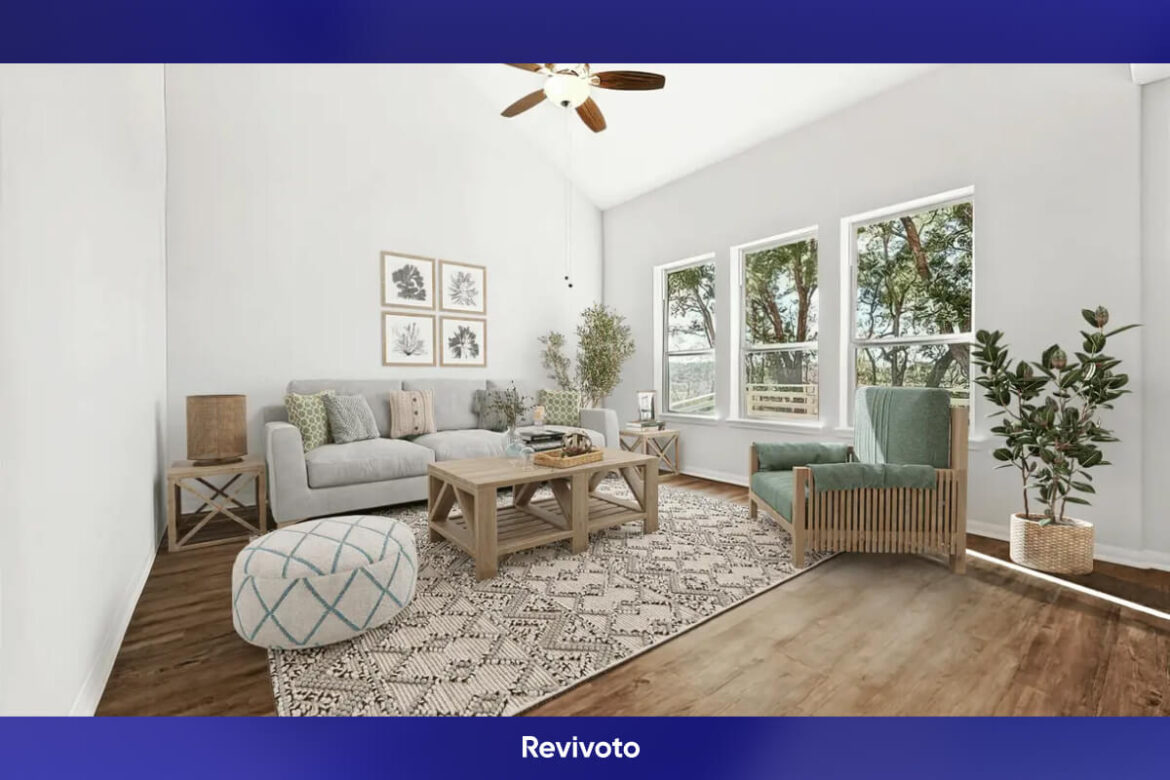In the fast-paced and – for lack of a better word – cut-throat real estate industry, where sales and turnover speak first and last, it takes a special effort to stay on top of everything.
Truly, there are few other industries as multi-faceted as real estate: Sales, legal affairs, permits & licenses, house visits, construction and renovation…
The list goes on and on. And in the middle of all that turmoil, you have to put your A-game on in advertisement to bring potential clients and kick off the whole thing.
Given the crucial nature of advertising for a successful real estate business, it’s only reasonable to have the most efficient tools at your disposal; tools that can facilitate advertising, reduce expenses, and shorten turnarounds for that much-needed competitive edge.
Within that arsenal of advertising apparatus, there’s one that can be subtle or bold, minimal or over-the-top, traditional or modern, depending on your choice and your customers’ taste. Giving you great adaptability and endless creative freedom, that tool is virtual home staging.
If you’ve ever heard about it but wonder, “What is virtual home staging?” or are a real estate professional seeking to utilize the endless benefits of virtual home staging in your operations, you’re definitely in the right place. Let’s explore this powerful real estate advertising instrument and see discuss why you should make it an integral part of your marketing practices.
Table of Contents
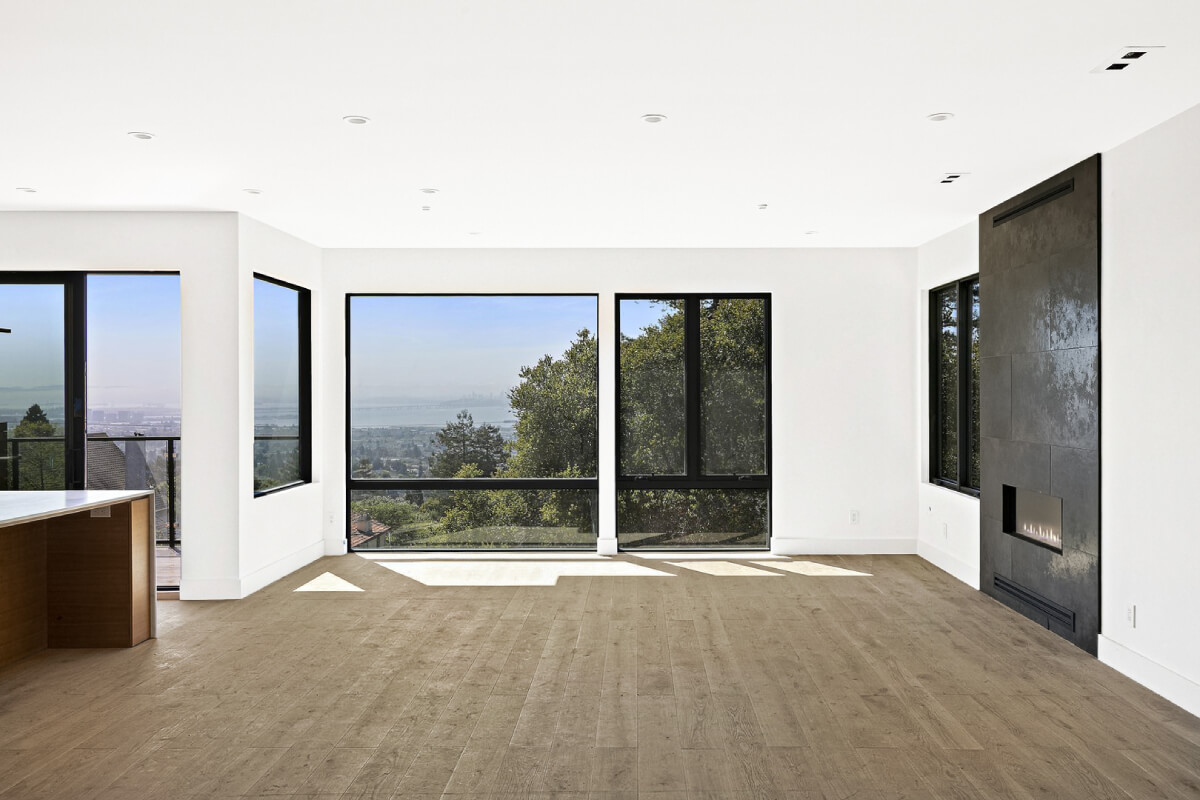
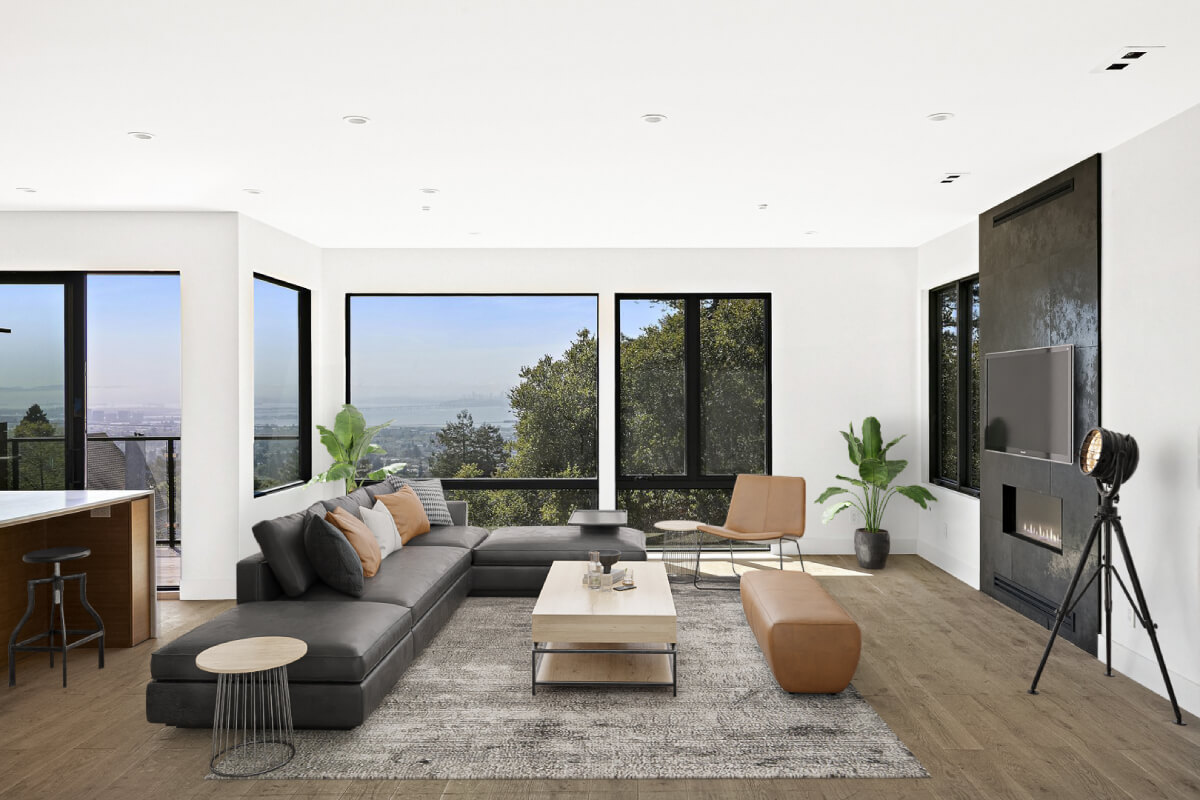
So… What is Virtual Home Staging?
Textbook definition of virtual home staging
In plain and straightforward terms, virtual staging refers to the use of advanced software and image editing techniques to digitally furnish and decorate a vacant or empty space, giving potential buyers or tenants a realistic preview of how the property can look when fully furnished. Virtual home staging allows real estate professionals and interior designers to transform blank canvases into attractive, inviting living spaces that captivate the imagination of potential clients.
The origin: A practice for the new millennium
Home staging, as an umbrella term and popular practice, was introduced back in the early 70s by the artistically gifted Barb Schwarz, but the roots of virtual home staging can be traced back to the early 2000s when digital photo manipulation tools began to gain popularity.
As technology advanced and imaging software became more sophisticated, the concept of virtual home staging started to take shape. Artists, photo editors, and real estate agents began to take a hint and set about exploring the power of image editing to stage empty spaces. Initially, virtual home staging was a niche offering, but with the advent of the holy world wide web, the rise of online property listings, and the increasing demand for visually appealing content, its popularity grew exponentially.
Over the years, virtual home staging has evolved from simple, rudimentary designs to highly realistic and immersive experiences. As processing power, computer graphics, and AI-driven algorithms improved, virtual home staging became more seamless, allowing for the creation of hyper-realistic images that are virtually indistinguishable from traditional staging.
Benefits of Virtual Home Staging
So, you now have the answer to “What is virtual home staging?” But what good does it do?
Virtual home staging offers an array of compelling advantages for real estate professionals, property developers, and interior designers alike. No matter your background or profession, as long as you’re dealing with properties, It can help optimize various aspects of your operations.
Cost-effective
Traditional staging can be costly, involving expenses for furniture rental, transportation, and staging professionals. Virtual staging service eliminates these expenses, making it a cost-effective alternative.
At Revivoto, our virtual home staging services start from $18.99. That’s equal to a few cups of coffee you have to buy for the movers before they even begin.
Time-efficient
Traditional staging can take days or even weeks to set up, especially for large properties. Virtual home staging significantly reduces turnaround time, allowing listings to go live much faster.
How long do you think traditional staging takes? A few days? A week? Even more? Well, virtual home staging at Revivoto takes an industry record of less than 24 hours, guaranteed, with no additional charge whatsoever!
Flexibly customizable
Virtual home staging provides unparalleled flexibility, enabling the easy customization of decor and furnishings to suit different target audiences and design styles. Moreover, it can be applied to various types of properties, from residential homes to commercial spaces, and can be adapted to different architectural styles, making sure you curate your listings that will appeal to all customer groups.
Unhappy with the layout? Need to shift items for a new look? With the 7 most highly-sought staging styles, namely traditional, modern, Scandinavian, farmhouse, urban-industrial, Hampton, and contemporary, as well as unlimited free revisions before acquiring the final result, Revivoto’s virtual home staging service is set to provide you with as many staging results as possible until you’re completely satisfied.
Photo-realistic
High-quality virtual home staging creates realistic visuals, enabling potential buyers to envision themselves living in the space and forming a strong emotional connection. Forget about posting cartoonish 3D photos and hopelessly watching them fail your expectations.
Accessible
With the rise of remote property shopping, virtual home staging allows potential buyers to explore properties from anywhere in the world without physically visiting the site. Never again fret about losing clients from other states, regions, or countries. Virtual home staging welcomes all.
Environmentally friendly
When comparing virtual home staging to physical staging, it becomes evident that virtual home staging has a lower environmental impact. Traditional staging involves the production and transportation of physical furniture and decor, which can contribute to waste and emissions. Virtual home staging, on the other hand, eliminates the need for physical materials, reducing the carbon footprint associated with staging services. By choosing virtual home staging, real estate professionals can promote sustainability and environmentally responsible practices.
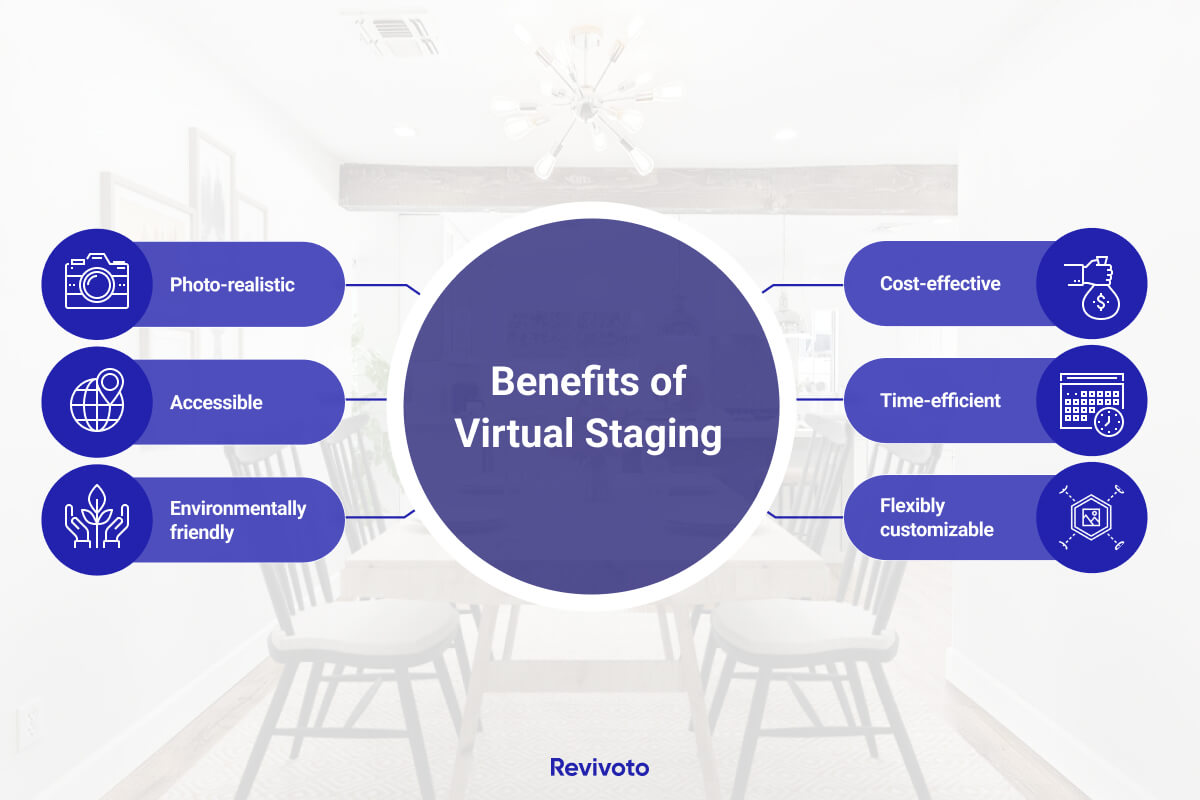
To order Virtual Staging at an unbeatable price click below!
It’s Not Just Real Estate: Virtual Home Staging & Industries
The real estate industry may be the first and most important user of virtual home staging in its practices. In fact, this advertising tool is tightly woven into the fabric of real estate marketing. But this industry isn’t the only professional sector that uses virtual home staging.
Apart from real estate, there are numerous other fields where virtual home staging comes in pretty handy:
Interior design & renovation
Interior designers leverage virtual home staging to present design concepts to their clients. By digitally staging different design ideas, they can help clients visualize potential outcomes and make informed decisions about the best design direction for their space. Similarly, companies in the home improvement and renovation sector use virtual home staging to demonstrate the potential of their products or services.
Commercial spaces and offices
Virtual home staging is equally applicable to commercial spaces and offices. Real estate agents and property owners use virtual home staging to present empty offices or commercial spaces to potential tenants or buyers.
Furniture retail
Furniture retailers utilize virtual home staging to display their products in various room settings. This helps customers visualize how specific pieces of furniture might fit into their own homes. A notable example of this is IKEA, delivering virtual home staging through its phone app, IKEA Place.
Architecture and construction
In architecture and construction, virtual staging can be used to showcase unbuilt or under-construction properties. It enables clients to see how the finished project might appear and helps in marketing and project visualization.
Vacation rentals
Companies or individuals renting vacation properties can use virtual staging to attractively present the space to potential renters. Virtual home staging helps create enticing images for online listings.
Event planning
Planning medium to large events, such as weddings, conferences, exhibitions, concerts, etc., requires a lot of effort when it comes to space allocation and design. Event planners could use virtual home staging to visualize and plan event setups, either to optimize their plans beforehand or showcase their venue’s potential to their customers.
Retail space leasing
Similar to office spaces, retail property owners and leasing agents utilize virtual home staging to showcase storefronts to potential tenants.
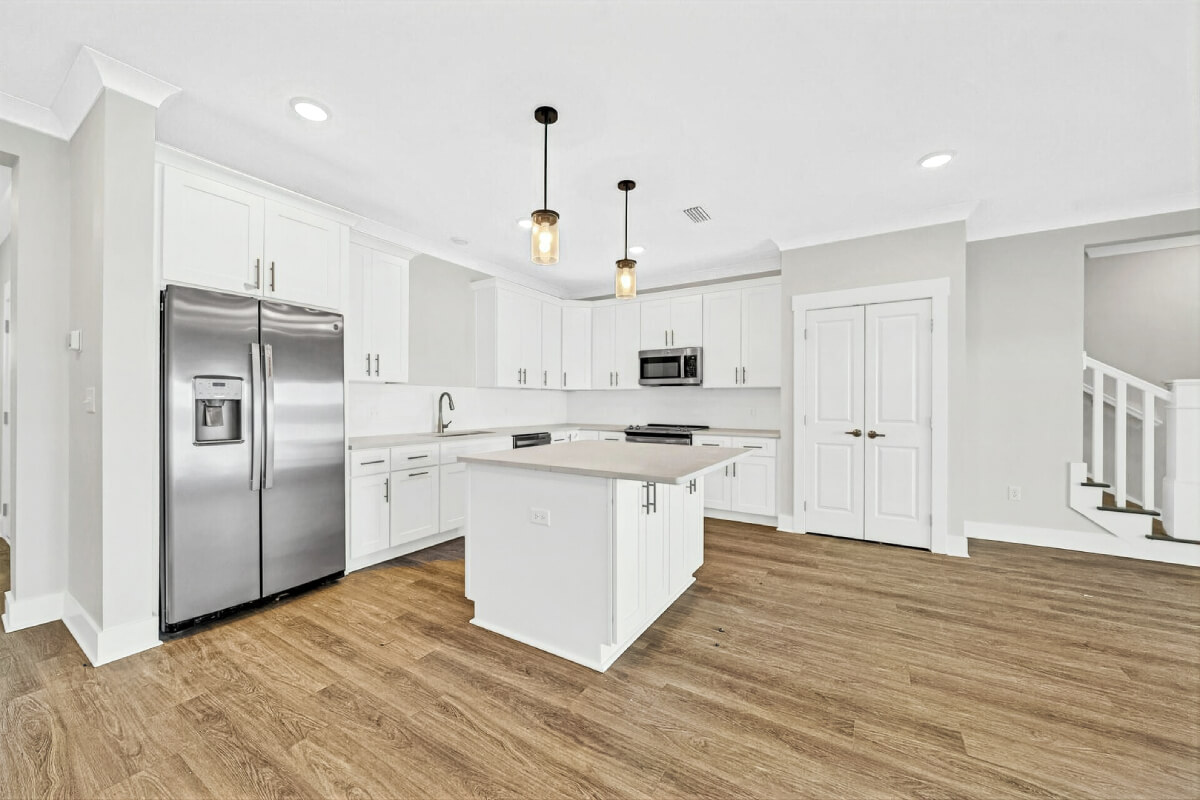
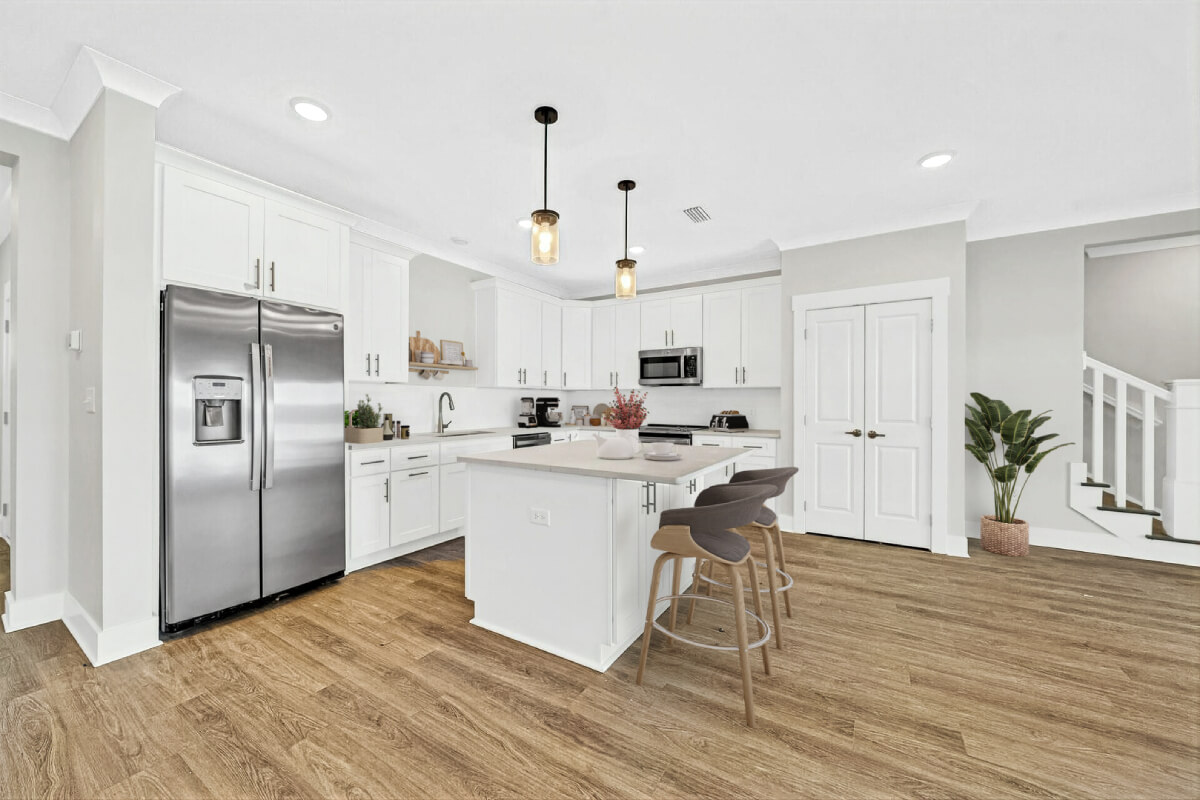
Behind the Scenes of Virtual Home Staging
Software and technology
Virtual home staging relies on specialized software and technology designed to create and edit digital images. The relevant programs often include a wide array of pre-built furniture and decor items that can be added to the images. Technology-wise, some software may even use virtual or augmented reality (VR/AR) capabilities to visualize virtual furnishings in real time.
Image editing
Virtual home staging requires expertise in image editing techniques to seamlessly integrate virtual furniture into original property photos. Techniques such as color correction, lighting adjustments, and shadow manipulation are used to make the virtual elements appear as if they belong in the physical space. That’s where aesthetically trained artists come unto the stage.
Furniture and decor
The selection of virtual furniture and decor items is a critical aspect of virtual home staging. Stagers and designers must carefully choose furnishings that complement the property’s style and layout, enhancing its visual appeal. In this regard, image editors work in close coordination with architects and interior designers to ensure they come up with the best possible layouts that follow up-to-date trends and interior design principles.
Realism and authenticity
Creating realistic virtual home staging designs is essential for the success of this advertising practice. Skilled virtual stagers focus on maintaining proportion, scale, and lighting consistency to ensure that the final images are authentic and appealing to potential buyers. All the effort boils down to offering images with photo-realistic quality to make sure potential buyers connect with the property listings on a real and meaningful level.
Best Practice Tips for Virtual Home Staging: Make Sure You Do It Right
Understand your audience
To create effective virtual home staging, it’s essential to have a deep understanding of the target audience. Different demographics and buyer personas may have distinct preferences and styles. Tailoring virtual home staging to align with the potential buyer’s interests and tastes increases the chances of making a strong emotional connection and piquing their interest.
Consistency and cohesion all the way
Maintaining consistency and cohesion throughout the virtual home staging process is crucial. The chosen furniture, decor, and overall style should harmonize with the property’s architectural features and design theme. Consistency ensures that the final images present a unified and appealing visual narrative.
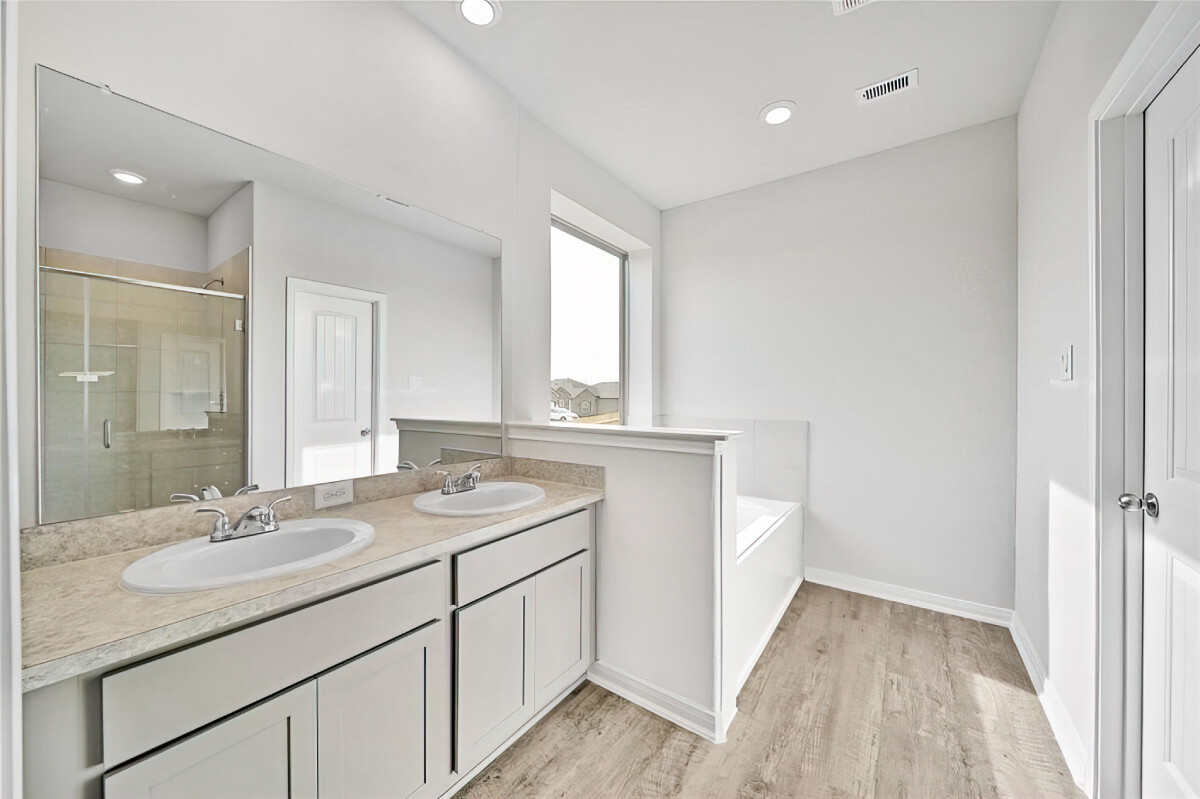
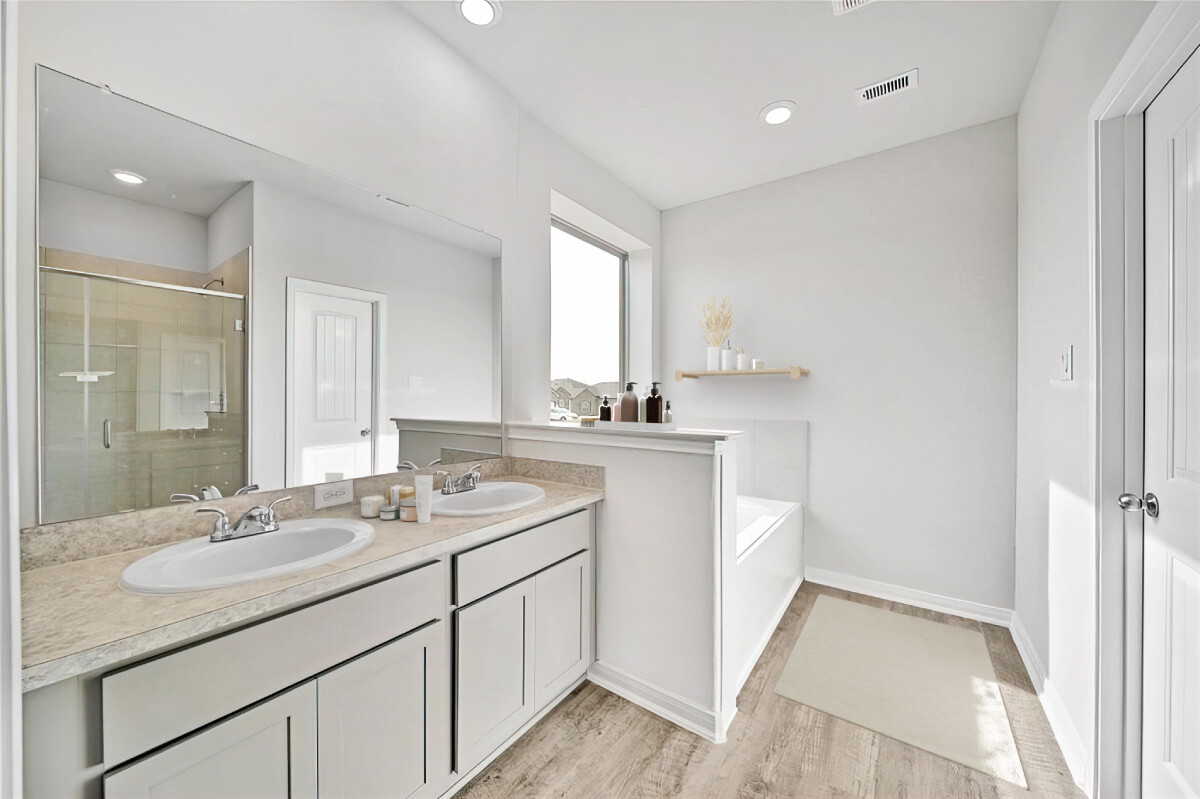
Mind the gap: The virtual vs. real balance
When combining virtual and real elements in a staged image, it’s essential to strike a balance that appears seamless and authentic. For instance, if a property has some existing furnishings, the virtual home staging should complement these elements rather than overpower them. Integrating virtual and real elements effectively enhances the overall visual impact. Also, you should do your best to match the photo-realistic quality of virtual elements with that of the real elements present in the image.
Observe the ethics
While virtual home staging offers creative freedom, it’s crucial to remain ethical and transparent in the process. It’s essential to clearly indicate that the images are virtually staged and not exact photos of the property. It’s always best to stay within ethical and legal boundaries and never risk regulatory issues.
Use decluttered rooms
For best results, try to use empty rooms. When the technology behind virtual home staging is faced with bare walls and floors, this tool can be utilized to its full potential. If you don’t have a vacant space, make sure it’s tidy and neat, without any crazy clutters or odd objects lying about. In such situations, you can use item removal as a complementary service to remove distractions.
Observe quality & resolution from the get-go
Ensure that the property photos are clear and taken at high resolutions. Quality images serve as a solid foundation for more successful virtual home staging results. Also, maintain consistent lighting throughout the photography process. One of the most challenging areas in virtual home staging (as well as image enhancement) are areas that are either too bright or too dark.
Virtual Home Staging Bumps: What to Look Out For?
Skepticism about realism
One of the primary challenges of virtual home staging is achieving a level of realism that convincingly replicates physical staging. While advancements in technology have improved the quality of virtual home staging, some skeptics may still doubt the authenticity of the staged images.
Ensuring that the virtual elements seamlessly blend with the original photographs and accurately represent the property is essential to overcome this challenge. Remember, your end goal is to create enough interest and trust that compels viewers to drop by in person and inspect the property up close.
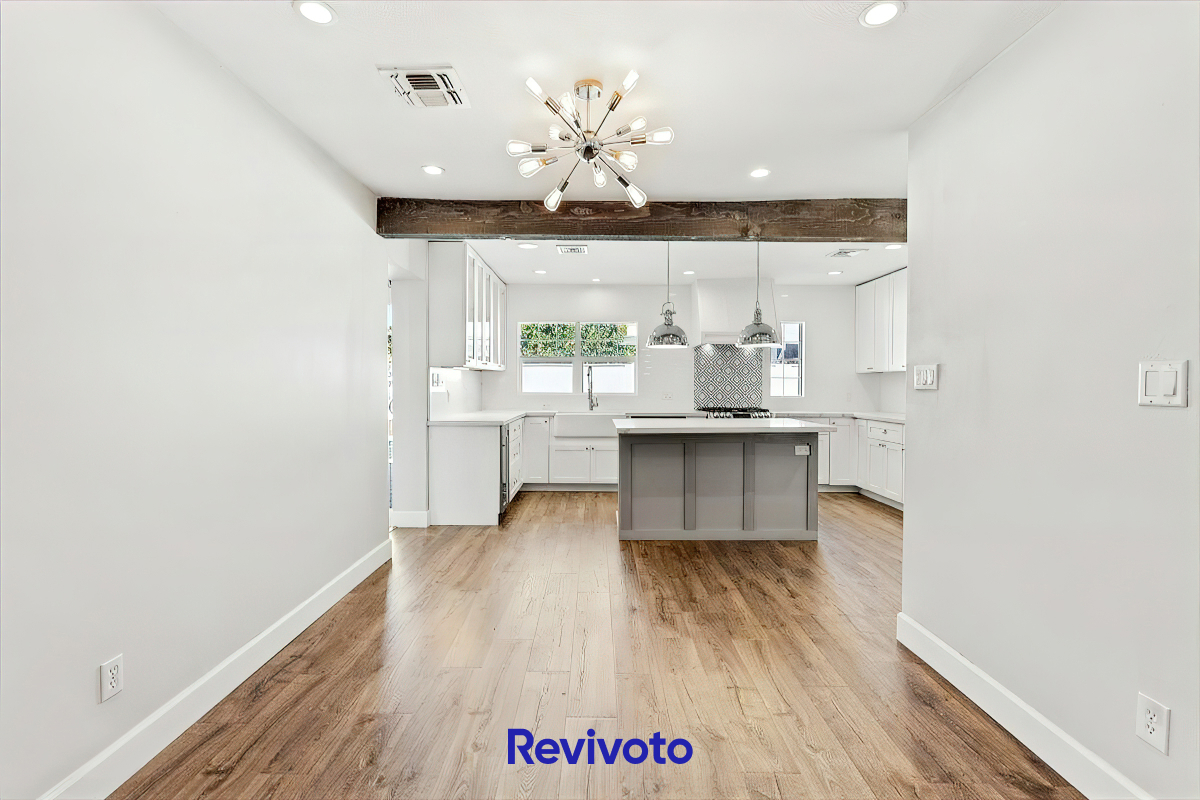
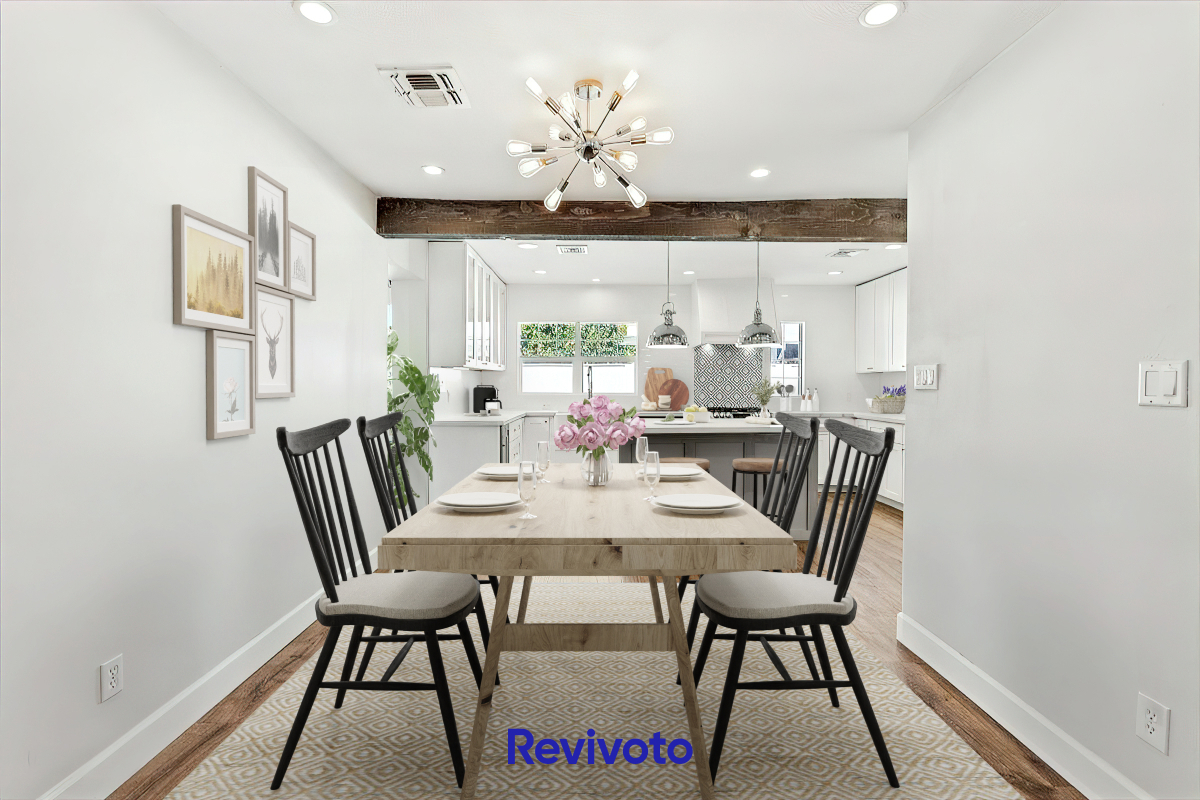
Proportional, through and through
Virtual home staging requires a keen understanding of room dimensions and layouts. If the virtual furniture is not accurately scaled or positioned, it can appear out of place and disrupt the visual harmony of the image. Matching virtual home staging with the actual room dimensions is crucial to avoid any discrepancies between the staged images and the physical space. After all, everyone knows the proportions of a bed or a sofa, and mistakes in virtual home staging can be spotted by anyone. You won’t need a magnifier for that.
Also, please be mindful of the perspectives in the images. Avoid placing virtual furniture in a way that contradicts the room’s physical layout, as it can create a jarring and unnatural effect.
Seamless integration is vital
In cases where a property has existing decor or furnishings, integrating virtual home staging with the real elements can be challenging. The virtual stager must carefully select virtual items that complement the existing decor and create a cohesive overall look. Failure to achieve this balance may result in an unnatural or disjointed appearance and lead to buyers losing interest in all your properties altogether.
Carve this on your heart: Bad virtual home staging isn’t a blow to the property; it ruins your reputation as a real estate professional.
Are you technologically capable?
The success of virtual home staging heavily relies on the capabilities of the software and tools used. While technology continues to improve, there are still certain limitations. For instance, rendering complex designs or highly detailed textures might require significant processing power and time. Overcoming these technological constraints is essential to deliver high-quality and timely virtual home staging services.
Legal and copyright considerations
Virtual home staging professionals and companies must be aware of legal and copyright considerations when using images for staging purposes. It’s essential to ensure that images used for virtual home staging are either licensed for commercial use or obtained from reputable stock image providers that allow commercial usage.
Furthermore, disclosing that images are virtually staged is vital from an ethical and legal standpoint. Potential buyers have the right to know that the images they are viewing are digitally enhanced and may not represent the current state of the property accurately.
Neither too much nor too far…
It’s called over-staging, and you should steer clear of it at all times! Avoid overloading the virtual space with too much furniture or decor, as it can make the design appear cluttered and unrealistic.
Also, make sure you don’t transform the original spaces in a way that they become unrecognizable. Stay loyal to the base photos and never, ever, ever misrepresent the property, as it will be considered misleading or, even worse, fraud. Misleading potential buyers or clients directly harm trust and credibility.
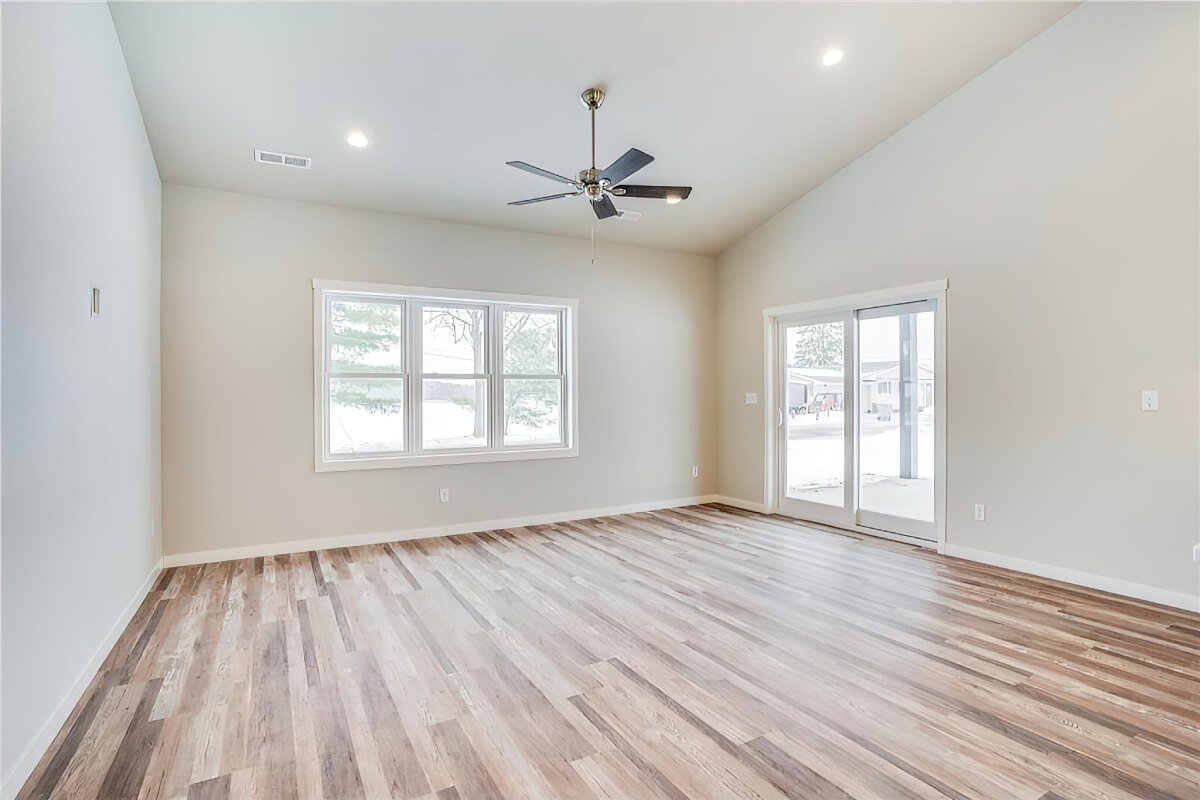

Virtual Home Staging on the March: Current Developments
Advances in technology
The future of virtual home staging is expected to see significant advancements in technology, leading to even more realistic and immersive experiences. Improved rendering capabilities, virtual or augmented reality integration, and faster processing speeds will likely redefine the boundaries of what is achievable in virtual home staging.
Integration with AI and machine learning
AI and machine learning will play a pivotal role in the future of virtual home staging. These technologies analyze vast amounts of data and user preferences to automate the staging process further. AI-generated customization and personalized staging recommendations will become more prevalent, making virtual home staging more efficient and tailored to individual clients.
Potential real estate disruptions
Virtual home staging is likely to disrupt the real estate industry in various ways. As virtual home staging becomes more sophisticated and prevalent, it may lead to reduced demand for traditional physical staging services.
Additionally, virtual home staging’s ability to showcase a property’s potential remotely could alter the dynamics of how properties are marketed and viewed, potentially impacting the need for in-person property visits and also opening new international real estate markets and marketplaces to vast audiences.
Conclusion
Virtual home staging has emerged as a powerful tool in the real estate and interior design industries, offering cost-effective, efficient, and visually compelling solutions to enhance property marketing and presentation. Its ability to transform vacant spaces into captivating living environments has proven instrumental in attracting potential buyers and increasing property sales.
As virtual home staging continues to evolve, it’s essential to encourage responsible and ethical practices. Transparency is crucial to avoid misleading potential buyers or clients, and disclosing that images are virtually staged ensures honesty in the marketing process.
The future of virtual home staging is filled with exciting possibilities. Advancements in technology, AI integration, and innovations in image rendering are set to redefine the virtual home staging landscape. As this technology matures, it will undoubtedly play a pivotal role in transforming how properties are marketed, bringing real estate and design industries closer to a more dynamic and immersive future.


